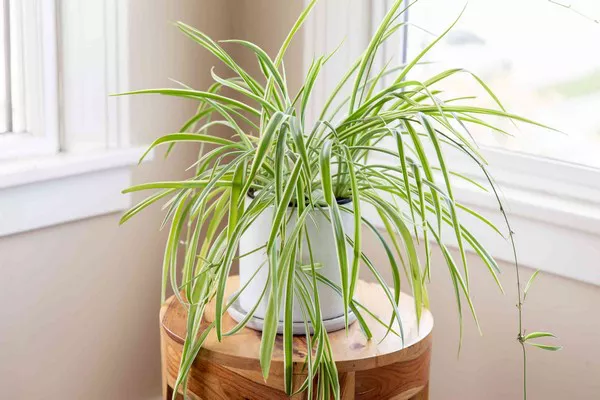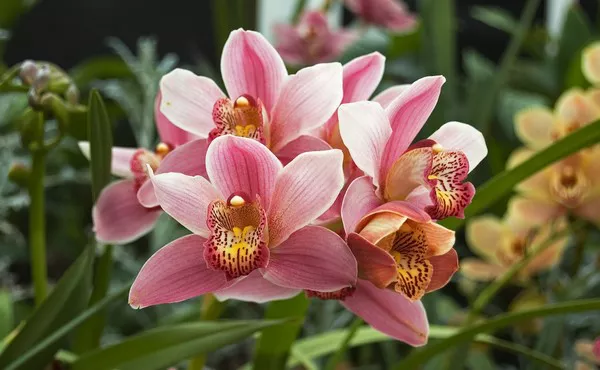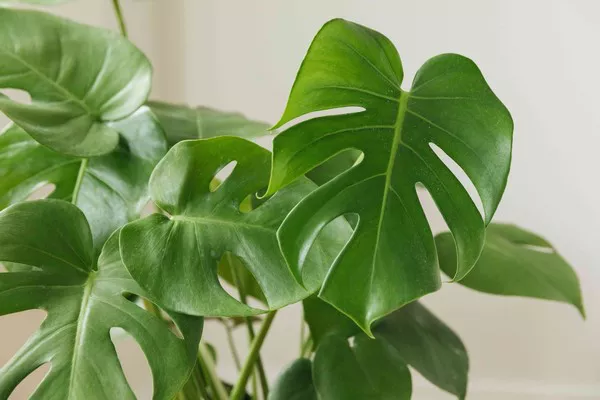Flower arrangements have been a long-standing tradition across cultures, adding elegance, fragrance, and life to various occasions. Among the myriad of flowers available, small white flowers hold a special place. They symbolize purity, simplicity, and grace, making them ideal for weddings, formal events, and even casual displays. In this article, we will explore the top 10 small white flowers that are used worldwide in flower arrangements, highlighting their unique characteristics, growing conditions, and significance in the floral industry.
Top 10 Small White Flowers Used in Flower Arrangements in the World
1. Baby’s Breath (Gypsophila)
Baby’s Breath, or Gypsophila, is one of the most popular small white flowers used in floral arrangements. It is known for its airy appearance and delicate clusters of tiny blooms, making it an ideal filler in bouquets and centerpieces.
Characteristics
The flowers of Baby’s Breath are tiny, white, and star-shaped. They grow in large, branching clusters, creating a light, cloud-like effect in arrangements. Their soft appearance pairs well with larger, more colorful flowers, providing balance and texture.
Growing Conditions
Baby’s Breath thrives in well-drained, sandy soil and prefers full sun. It is a drought-tolerant plant, making it relatively easy to grow. It blooms in late spring to early summer, providing a consistent source of flowers for arrangements.
Cultural Significance
Often used in bridal bouquets and wedding décor, Baby’s Breath symbolizes everlasting love, purity, and innocence. Its delicate appearance makes it a staple in romantic and elegant arrangements.
2. Lily of the Valley (Convallaria majalis)
Lily of the Valley is a charming, bell-shaped flower that exudes a sweet fragrance. It has long been prized in floral arrangements for its dainty size and pure white petals, adding elegance to any display.
Characteristics
The small, bell-like blooms of Lily of the Valley hang delicately from slender stems. Their pristine white color and delightful scent make them a popular choice for wedding bouquets and other formal arrangements.
Growing Conditions
Lily of the Valley thrives in shady, well-drained soil and prefers cooler climates. It blooms in spring, making it a seasonal favorite for springtime events and arrangements.
Cultural Significance
Lily of the Valley has deep symbolic meanings in various cultures, often representing purity, humility, and a return to happiness. It is frequently used in bridal bouquets due to its association with love and devotion.
3. Stephanotis (Stephanotis floribunda)
Stephanotis, also known as Madagascar Jasmine, is a small white flower known for its waxy, star-shaped blooms and sweet fragrance. It is a popular choice for formal flower arrangements, particularly in weddings.
Characteristics
Stephanotis flowers are small, pure white, and have a distinctive star shape. Their waxy texture gives them a long-lasting quality, making them ideal for floral arrangements that require durability.
Growing Conditions
Stephanotis thrives in well-drained soil and prefers warm, humid climates. It requires bright, indirect light and regular watering to produce its signature blooms.
Cultural Significance
In the language of flowers, Stephanotis symbolizes marital happiness, making it a common choice for wedding bouquets and boutonnieres. Its elegant appearance and fragrance also make it popular in corsages and formal event decorations.
See Also: Top 10 Highly Poisonous Plants That Can Cause Paralysis in the World
4. Snowdrop (Galanthus)
Snowdrops are one of the earliest blooming flowers in the spring, known for their delicate white petals that nod gracefully from slender stems. Their small size and subtle beauty make them a charming addition to flower arrangements.
Characteristics
Snowdrops feature drooping, bell-shaped flowers with three outer petals and three shorter inner petals. Their pure white color and petite size make them perfect for adding subtle elegance to arrangements.
Growing Conditions
Snowdrops prefer moist, well-drained soil and partial shade. They are hardy plants, often blooming even when snow is still on the ground, making them a symbol of hope and renewal.
Cultural Significance
Snowdrops symbolize purity, hope, and the promise of spring. They are often used in early spring arrangements and are particularly popular in naturalistic or woodland-style floral designs.
5. White Clover (Trifolium repens)
While often considered a wildflower or ground cover, White Clover’s small, globe-like flowers are increasingly being used in modern floral arrangements for their unique texture and simplicity.
Characteristics
White Clover produces small, rounded clusters of tiny, white flowers. Their soft, globe-like appearance adds a unique texture to flower arrangements, particularly in rustic or garden-inspired designs.
Growing Conditions
White Clover thrives in well-drained soil and full sun to partial shade. It is a hardy plant that spreads quickly, making it a low-maintenance option for gardeners and florists alike.
Cultural Significance
White Clover is often associated with luck and good fortune, especially the rare four-leaf variety. Its simple beauty and symbolism make it a thoughtful addition to casual and whimsical flower arrangements.
6. White Statice (Limonium sinuatum)
White Statice is a popular filler flower used in bouquets and dried arrangements. Its small, papery blooms have a long vase life, making it a favorite among florists.
Characteristics
The small, clustered blooms of White Statice have a delicate, papery texture. Their bright white color contrasts beautifully with larger, more colorful flowers, making them an excellent filler for bouquets.
Growing Conditions
Statice thrives in well-drained soil and full sun. It is a hardy plant that blooms from mid-summer to early fall, providing a long-lasting supply of flowers for fresh and dried arrangements.
Cultural Significance
White Statice symbolizes remembrance and sympathy, making it a common choice for funeral arrangements. Its durability and long vase life also make it popular for dried flower arrangements and wreaths.
7. Jasmine (Jasminum)
Jasmine is known for its small, star-shaped flowers and intoxicating fragrance. While most varieties produce white flowers, some species also feature yellow blooms. White Jasmine is often used in bridal bouquets and other formal arrangements.
Characteristics
Jasmine flowers are small, delicate, and star-shaped. Their pure white color and sweet fragrance make them a favorite for floral arrangements, especially for weddings and romantic occasions.
Growing Conditions
Jasmine thrives in well-drained soil and full sun to partial shade. It prefers warm, humid climates and requires regular watering to produce its fragrant blooms.
Cultural Significance
Jasmine symbolizes love, purity, and sensuality, making it a popular choice for romantic flower arrangements. Its sweet scent also makes it a common ingredient in perfumes and scented oils.
See Also: Top 10 Most Popular Herbs for Gardens Worldwide
8. Astilbe (Astilbe spp.)
Astilbe is a perennial flower known for its feathery plumes of small, densely packed flowers. The white varieties add texture and volume to flower arrangements, making them ideal for bouquets and centerpieces.
Characteristics
Astilbe produces fluffy, plume-like clusters of tiny white flowers. Their feathery appearance adds a soft, romantic touch to floral arrangements, especially in rustic or woodland-themed designs.
Growing Conditions
Astilbe thrives in moist, well-drained soil and partial shade. It is a hardy plant that blooms in late spring to early summer, providing long-lasting blooms for flower arrangements.
Cultural Significance
Astilbe is often associated with patience and dedication. Its soft, airy appearance makes it a popular choice for weddings and romantic events, where it symbolizes enduring love.
9. White Campion (Silene latifolia)
White Campion is a wildflower known for its delicate, star-shaped blooms. It is increasingly being used in flower arrangements for its simple, natural beauty and rustic charm.
Characteristics
White Campion features small, five-petaled, star-shaped flowers. Its delicate appearance and soft white color make it a perfect addition to naturalistic or wildflower-themed arrangements.
Growing Conditions
White Campion thrives in well-drained soil and full sun to partial shade. It is a hardy, low-maintenance plant that blooms from late spring to early summer.
Cultural Significance
White Campion symbolizes purity and modesty. Its wildflower appearance makes it a popular choice for rustic and country-style flower arrangements, where it adds a touch of natural elegance.
10. White Veronica (Veronica longifolia)
White Veronica is a slender, spiky flower that adds height and texture to flower arrangements. Its small, tubular flowers bloom along tall stems, creating a striking visual effect.
Characteristics
White Veronica produces small, tubular flowers that grow in tall spikes. Its pure white color and vertical growth habit make it an excellent choice for adding height and structure to arrangements.
Growing Conditions
Veronica thrives in well-drained soil and full sun. It is a hardy perennial that blooms from early summer to late fall, providing a long-lasting source of flowers for arrangements.
Cultural Significance
White Veronica symbolizes fidelity and steadfastness, making it a popular choice for wedding bouquets and formal arrangements. Its tall, graceful stems add elegance and sophistication to any floral display.
Conclusion
Small white flowers are a timeless choice in flower arrangements, symbolizing purity, grace, and elegance. From the delicate Baby’s Breath to the fragrant Jasmine, these flowers add texture, contrast, and depth to bouquets and centerpieces. Whether you are creating a wedding bouquet, a formal centerpiece, or a simple arrangement for your home, these small white flowers provide a versatile and beautiful option for any occasion.
Their ability to complement larger, more colorful blooms while standing out on their own makes them an essential component in the world of floral design. By understanding their unique characteristics and growing conditions, you can make informed choices when selecting the perfect small white flowers for your arrangements.
You Might Be Interested In:



![10 Most Richest Cities in the United States [Revealed!]](https://www.validdownloads.com/wp-content/uploads/2023/12/Manjula-Pothos.webp)




















